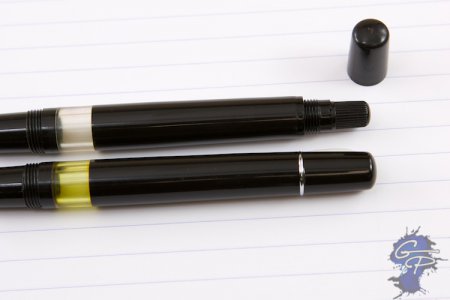- Joined
- Dec 1, 2012
- Messages
- 38
Hello all,
Anyone has experience working with acrylic?
I want make a fountain pen with a ink window to see the ink level inside the pen. I will use transparent or translucent acrylic.
So far I have worked only with extruded acrylic. Its not easy to leave the interior surface "clean" without scratches because of the scratches the swarf makes when machining the inside.
I will describe the process m using and will appreciate your inputs to be able to have a clear ink window:
I was told by a friend that cast acrylic is easier to machine and finish as it will produce less swarf and therefore scratch less the inside of the barrel, is this correct?
Cast acrylic is much more expensive and I don't want to trow the money out the window...
Will cast acrylic work better and will be easier to have a clear ink-window? Is the cost difference worth while??
This is a picture of of 3 clear inkwindows to show what I want to do.

Thanks in advance for your inputs.
Best regards

Anyone has experience working with acrylic?
I want make a fountain pen with a ink window to see the ink level inside the pen. I will use transparent or translucent acrylic.
So far I have worked only with extruded acrylic. Its not easy to leave the interior surface "clean" without scratches because of the scratches the swarf makes when machining the inside.
I will describe the process m using and will appreciate your inputs to be able to have a clear ink window:
- Reduce the acrylic stock to the external diameter needed;
- drill the hole using a drill bit in the lathe
- machine to the internal diameter using a Horn R108 internal insert
- Sand internal and externally with 1500 and 2000 sand paper.
- Polish inside and outside using a car polisher cream
I was told by a friend that cast acrylic is easier to machine and finish as it will produce less swarf and therefore scratch less the inside of the barrel, is this correct?
Cast acrylic is much more expensive and I don't want to trow the money out the window...
Will cast acrylic work better and will be easier to have a clear ink-window? Is the cost difference worth while??
This is a picture of of 3 clear inkwindows to show what I want to do.

Thanks in advance for your inputs.
Best regards


